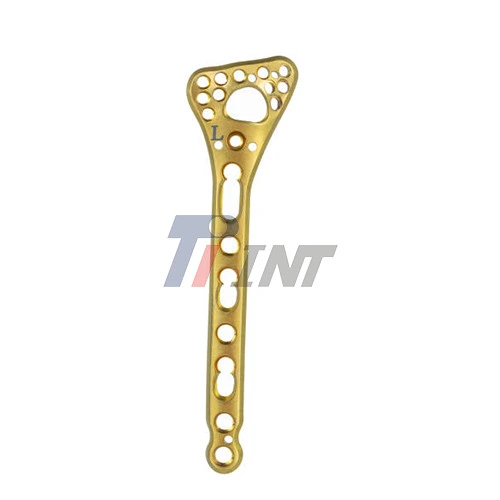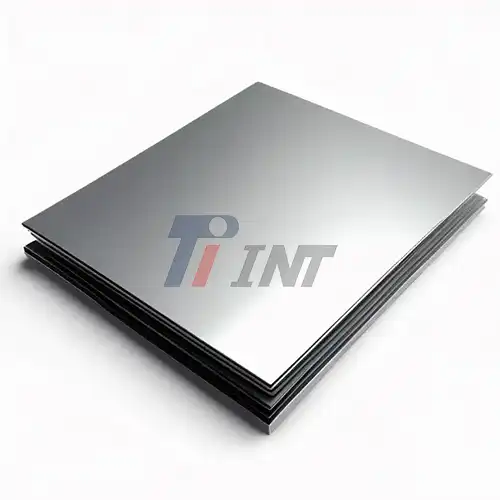Understanding Titanium Plates in Bone Surgery
What Are Titanium Plates and Their Purpose?
Titanium plates are medical devices used in orthopedic and maxillofacial surgeries to stabilize and support fractured or surgically altered bones. These plates are specifically designed to aid in the healing process by holding bone fragments in place, allowing for proper alignment and fusion. The use of titanium plate for bone repair has revolutionized surgical procedures, offering a robust yet lightweight solution for various skeletal issues.
|
|
|
Properties of Titanium That Make It Ideal for Medical Implants
Titanium's popularity in medical implants stems from its unique set of properties:
- Biocompatibility: Titanium integrates well with human tissue and bone, minimizing the risk of adverse reactions.
- Corrosion Resistance: It withstands the body's harsh internal environment, ensuring longevity of the implant.
- High Strength-to-Weight Ratio: Titanium offers excellent strength while remaining lightweight, reducing stress on surrounding tissues.
- Osseointegration: The ability of titanium to bond with bone tissue promotes faster healing and stability.
- Non-ferromagnetic: Titanium is compatible with MRI scans, allowing for post-operative imaging without interference.
The Manufacturing Process of Titanium Plates
The production of titanium plates involves a meticulous process to ensure quality and safety:
- Raw Material Selection: High-grade titanium or titanium alloys (like Ti6Al4V ELI) are chosen for their purity and strength.
- Precision Machining: Advanced CNC machines are used to cut and shape the titanium into specific plate designs.
- Surface Treatment: Plates undergo processes like anodization to enhance their biocompatibility and corrosion resistance.
- Sterilization: Rigorous sterilization procedures are implemented to eliminate any contaminants.
- Quality Control: Each plate is inspected to meet strict medical standards and certifications.
The Body's Response to Titanium Implants
Initial Healing Process After Implantation
When a titanium plate is implanted, the body initiates a complex healing response:
- Inflammation: A normal, short-term reaction that triggers the healing process.
- Blood Clot Formation: Creates a scaffold for new tissue growth.
- Cellular Migration: Osteoblasts and other cells move to the implant site.
- Osseointegration: Bone cells grow directly on the titanium surface, anchoring the implant.
- Remodeling: The bone around the implant continues to adapt and strengthen over time.
Long-term Adaptation and Integration
Over time, the body continues to interact with the titanium plate:
- Bone Remodeling: The surrounding bone tissue adapts to the implant's presence, often becoming stronger.
- Stable Integration: The titanium plate becomes a stable part of the skeletal structure.
- Minimal Wear: Titanium's durability ensures minimal degradation over years of use.
- Stress Distribution: The plate helps distribute forces evenly across the healed bone.
Potential Complications and Their Causes
While rare, some complications can occur:
- Infection: Usually due to external factors rather than the titanium itself.
- Loosening: Can occur if the bone doesn't properly integrate with the implant.
- Mechanical Failure: Extremely rare but possible under extreme stress or trauma.
- Metal Sensitivity: A small percentage of patients may develop sensitivity to metal components.
Advancements in Titanium Plate Technology
Innovations in Design and Material Composition
Recent advancements have further improved titanium plates:
- 3D Printing: Allows for custom-designed plates that perfectly fit individual patient anatomy.
- Surface Modifications: Nano-texturing and coatings enhance osseointegration and reduce bacterial adhesion.
- Alloy Improvements: New titanium alloys offer even greater strength and biocompatibility.
- Biodegradable Coatings: Some plates now feature coatings that release beneficial substances to promote healing.
Customization and Patient-Specific Solutions
The ability to customize titanium plates has revolutionized bone surgery:
- Pre-surgical Planning: Advanced imaging and 3D modeling allow for precise plate design before surgery.
- Patient-Specific Implants: Plates can be tailored to match individual bone structures and surgical needs.
- Reduced Surgery Time: Custom plates often result in shorter, more efficient surgical procedures.
- Improved Outcomes: Personalized solutions lead to better fit, stability, and patient satisfaction.
Future Directions in Titanium Implant Research
Ongoing research promises even more advanced titanium implants:
- Smart Implants: Development of plates with embedded sensors to monitor healing and detect complications.
- Bioactive Surfaces: Research into surfaces that actively promote bone growth and healing.
- Antimicrobial Properties: Exploration of titanium alloys or coatings with inherent infection-resistant properties.
- Nano-engineered Structures: Utilizing nanotechnology to enhance the implant's integration with bone tissue.
Conclusion
In conclusion, the body's rejection of titanium plates is exceptionally rare, thanks to titanium's outstanding biocompatibility and the advanced manufacturing processes employed by companies like Baoji INT Medical Titanium Co., Ltd. The use of titanium plate for bone repair continues to evolve, with ongoing innovations enhancing their safety, effectiveness, and customization potential.
While complications can occur, they are typically not due to rejection of the titanium itself. As technology advances, we can expect even more sophisticated and patient-friendly titanium implants in the future, further cementing titanium's role as a crucial material in medical implants. For more information about high-quality medical titanium products and custom solutions, please contact Baoji INT Medical Titanium Co., Ltd. at export@tiint.com.











 2025-08-26 10:06:35
2025-08-26 10:06:35

